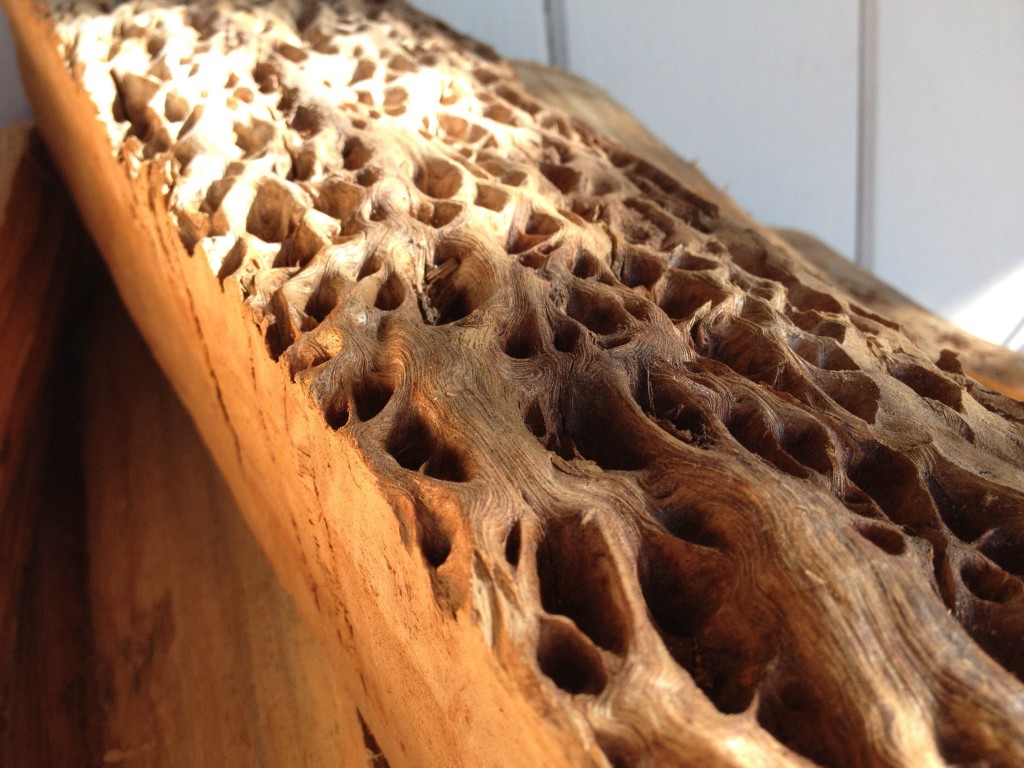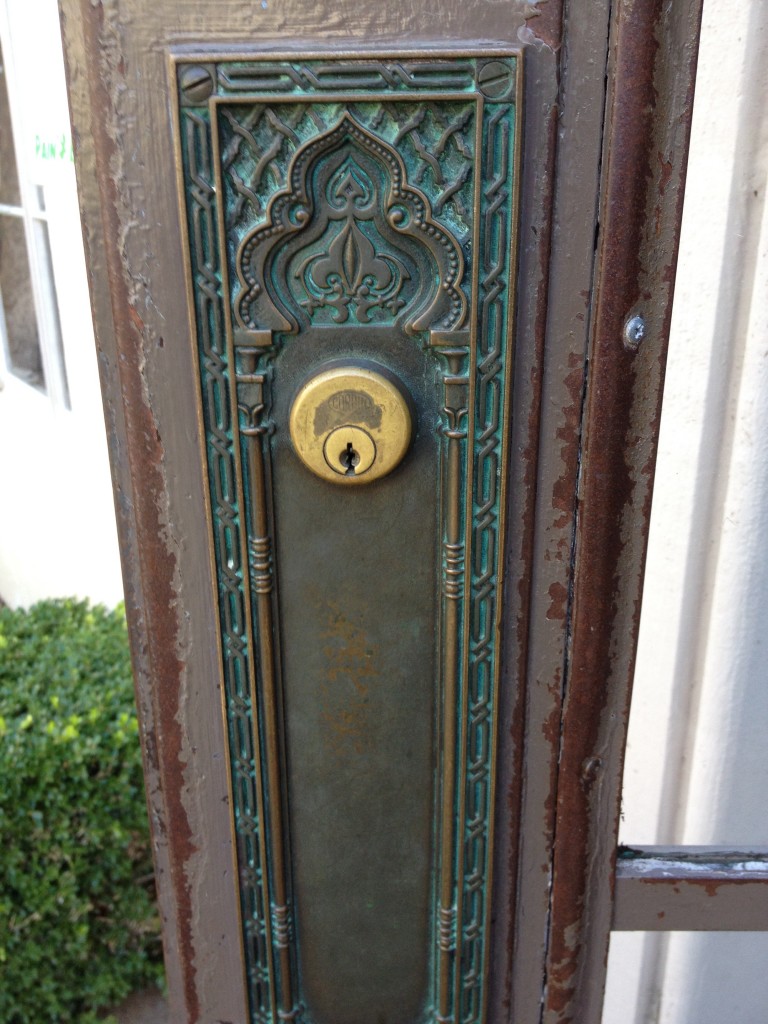“No, don’t touch that!” “Please, no touching.” “You break it, you buy it.”
We (me included) tell our kids not to touch it because they’ll break it. Touching art is a no-no. We aren’t encouraged to touch yet it’s how we experience the world. Good design should let you touch with the eyes and hands. Something well-made feels good in your hand. Indeed, a craftsman has held an object themselves, let their fingers guide design and shaping along with eyes and mind. Steve Jobs got this–it doesn’t matter if the device works, will you want to hold it for a long period of time? Given how much we hold our smartphones it’s a blessing that someone really made sure it was the right size and form.
When I design I want to include textures that invite touching. Here’s a piece of firewood that was much too sensuous to burn. Imagine the hardness of eucalyptus run through with these flowing crevices. Your fingers can trace the patterns and you understand much more about the tree and its growth than if you just read about it.
Often the act of touching makes something far more interesting than if it had been preserved in its “new” state. Take this door hardware from an old university. I like seeing where the key has slightly missed the tumbler, scratching and wearing down the lock cylinder until it shines with years of entry, countless moments of the ceremony of being the keyholder and gaining entrance to a protected space. When you hold a key and turn it, your knuckle and tip of your thumb describe an arc on either side of the tumbler but not as much on the top. See how the finish still remains just above the keyhole but not beside it?
Think about what it’s like to grab a door handle. The wear pattern tells you people are pulling from slightly above, grabbing the inside with hooked fingers and letting them slide out as the door opens. Since it’s a left-hand door most people are using their left hands to open it, and their thumb rubs along the tracery near the top of the handle. And perhaps they are using their right hand to hold the door open for someone else, wearing away the paint along the wood strike edge and polishing it brown. Notice the edge of the other door in the background isn’t worn. Maybe that door isn’t used as much?
Touch is rewarded by texture, texture invites touch. Each of the things above is improved the more it’s touched. If you design, try to include these things for all of us.



